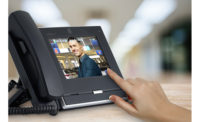Intuitive app-based solutions and location-based services are making it easier for more people to add home control and security to their homes. Security dealers who offer cutting-edge technology in home automation and security and explore creative approaches to selling it will find opportunity to expand their customer base as they reach into new markets.
“What’s emerging is the really rapid adoption of the mobile device as the primary interface for smart home control,” says Dave Pedigo, senior director of learning and emerging technologies at the Custom Electronic Design and Installation Association (CEDIA) located in Indianapolis. As more consumers come to rely on mobile devices, the nature of the user interface for security and home automation systems is changing, with homeowners eschewing proprietary devices and Internet connections via home computers in favor of access through their mobile devices.
“They’re not really interested in the technology if there’s not an app attached to it,” observes Larry Wright, senior vice president at AiN Group, based in Chesterfield Township, Mich.
While the concept of app-based solutions is nothing new, how manufacturers are exploiting the power of mobile devices through apps and other technology is having a big impact on the market. With the ability to directly access their home automation and security systems, consumers can get the functionality they want without the premium price tag as these mobile technologies are available at significantly lower price points than proprietary equipment and custom programming.
Most manufacturers either currently offer or are in the process of developing mobile apps. The software is rapidly evolving to enhance the users’ experience, as apps becoming increasingly more intuitive. “Years ago the security industry thought about hardware. Now we look at software and ease of use,” says Steve Shapiro, group director of product management, ADT Security Services, Boca Raton, Fla.
Here are three new ways manufacturers are developing innovative services.
1. Tapping into the Internet
The Internet is not new, but Ube’s novel approach is harnessing the technology is a new way. Have you hear of the Internet of Things?
“Our idea is to creatively use the power of the cell phone, which is typically two orders of magnitude greater than the typical high-end home control system,” says Glen Burchers, co-founder and chief marketing officer for Austin, Texas-based Ube. He says that while current home control systems are available to wealthier consumers, the cost for a system featuring custom hardware and programming can prohibitive to the average consumer. “In order to democratize the experience, we are building around the Internet of Things,” says Burchers. The Internet of Things is based on the idea that physical objects can be identified and connected directly to the Internet. In Ube’s novel approach, IP-enabled devices throughout the home are controlled with a single mobile app. While Ube will be selling IP-based dimmers and electrical outlets, most of the appliances and electronics will be purchased from traditional electronics manufacturers as more and more are adding IP capabilities to their products (See “Ube: The Smartphone IS the Panel”for more on Ube’s approach).
2. Tapping into NFC’s Power
Crestron is approaching mobile technology from yet another angle. Utilizing near field communication (NFC) capability, Crestron’s airConnect allows homeowners to activate personal settings for lighting, shades, temperature, and entertainment systems by simply tapping or even holding a smart device near an NFC tag. Dan Jackson, senior research and development engineer at Rockleigh, N.J. -based Crestron explains that NFC is simply an extension of radio-frequency identification (RFID) technology with the twist of embedding it in smartphones. Many Android devices are already NFC enabled. By using the Android mobile app, homeowners can easily set their own individual settings for each room in the house. NFC tags are paper-thin, approximately one square-inch in size, and do not required electricity or other support, allowing them to be conveniently placed in multiple locations throughout the home. When the user gently taps the tag, the music, lighting, and temperature are adjusted to the individual’s preferences programmed into the phone. NFC tags are affordable, about 50 cents to $1 each, Jackson says. “For $10 to $20, you’re adding a whole new level of functionality to the home.”
Cost savings are even greater considering that the increased functionality comes without the need for additional coding. “To us, it’s sort of a philosophical shift, we’re trying to significantly reduce the amount of programming needed,” Jackson shares. End users aren’t the only ones who appreciate the ease of use and reduced amount of programming; dealer response has been very positive as well. “Dealers hate programming; it’s hard to sell. They’d rather go in and install,” Jackson says, adding that dealers make more money from selling products and services than programming.
Though affordable and easy to install, the NFC-based system does have limitations. Apple iOS devices are not presently NFC enabled and the technology works only at short distances from the tag. However, Crestron is currently researching Bluetooth technology to provide additional range and is looking into developing a system that combines both NFC and Bluetooth technology to provide the best user experience, Jackson says.
3. Tapping into GPS
Alarm.com is extending boundaries even further — literally. The company’s Geo-Services released last March uses the GPS capability of smartphones to enhance user interaction with security and home automation systems. “Location-based services are becoming popular, but we’re the first to integrate it with security and home automation,” says Rebecca Davenport, director of product management for mobile at Vienna, Va.-based Alarm.com. “It’s our desire to expand the ecosystem beyond the home.”
The Geo-Services interface allows users to easily create “geofences,” or user-defined boundaries, and then create rules based on the phone’s location relative to those geofences. When the GPS in the homeowner’s phone crosses the geofence (a one-mile radius from the home for example), the system will send a message to notify the user if the alarm has not been set, and the user can arm it remotely. Arming reminders are the first Geo-Services feature to be offered. Alarm.com is planning to roll out additional features in upcoming months, including message-filtering options (e.g. telling the system to not send certain notifications if one of the users is in the home).
“The goal for us is for them to get the system, set it and forget it,” Davenport says. She adds that the Geo-Services capability has been well received by the tens of thousands of customers currently using it, and she anticipates greater adoption of it as Alarm.com rolls out more features. Alarm.com is the only company currently offering geofencing options, but a number of other manufacturers are in the process of developing their own location-based service.



